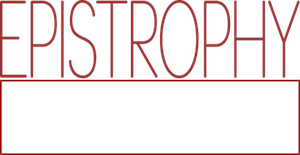Guideline to submit papers
GUIDELINE FOR SUBMISSIONS
Papers submitted must contain original work and must not have been simultaneously submitted to another journal. Research papers can be any of the following : reviews or original research results in answer to the call for papers (30 000 signs maximum, spaces, notes and bibliography not included).
Papers must conform to the following standards :
I. Sending
Papers must be sent by mail to epistrophy@epistrophy.fr with the following :
An .rtf or .doc text file [no .docx] AND a .pdf file of the extended paper.
Separate files for scores and high resolution illustrations (.jpg or .tiff).
Internet links for musical excerpts and videos (no attached documents)
If necessary, reproduction authorizations for images, pictures, diagrams, graphs and any other kind of illustration previously published and reprinted in the submitted paper.
Epistrophy publishes original works in French or in English. Each submitted paper includes :
A title page with the complete title and the author’s name, affiliation, address, phone number and email address.
An 100-200 words bilingual abstract. An abstract is a brief overview of the entire paper and not its conclusions alone. It doesn’t include references to other published works.
A bibliography that gathers all the references in the paper, in accordance with the editorial standards mentioned below.
A brief bio-bibliography of the author(s).
A list of the artists (musicians, bands, composers, writers, film makers, etc.) studied (and not just mentioned) for indexing.
A list of key words.
II. Editorial standards
The text is written in font size 12.
Titles and subtitles are in bold.
Capital letters take accents.
Books and record titles are in italics.
Titles of pieces are in between inverted commas.
Each language has its own punctuation rules to follow.
Musical examples and illustrations are continuously numbered and captioned. Their place in the paper is clearly indicated and they are clearly referenced (e.g. fig. or ill. 1).
Quotations are not in italics. Quotations of 4 lines or less are kept as part of the text in the same font and between commas. Quotations 4 lines or more are put in a separate paragraph in font size 11. No […] at the beginning or the end of a quote.
Footnotes are at the bottom of the page and continuously numbered. In the text, they are placed before any punctuation mark (especially before a final comma) in exponent position.
Bibliographical references are marked in the text by a footnote with the author’s name, the year of publication and the page (and then listed at the end of the paper). When an author has published several works during one year, they are referenced with a letter as follows : (Smith, 2002a, p. 55), (Smith, 2002b, p. 55-57) ; the same letter is in the final bibliography too.
Bibliographical references at the end of the paper include : name and first name of the author, title, place, publishing house and year of publication. When the book is a republication, the original year of publication is indicated between square brackets after the year of publication of the referenced edition.
As for articles, the volume number and the date are both indicated. Article titles are in inverted commas. Internet references include, after the title, the quote [In line] and at the end the internet address between < >, as well as the date of consultation.
As for collective works edited by one or several authors, indicate (ed.) after the editors’ names.
III. Editorial process
The editorial team gathers to decide which submitted papers will be sent to the editorial board. Then, they select two readers in the editorial board or beyond, as specialists of the paper’s subject. The paper is anonymized before being sent for reading. The readers send back their anonymous comments, by following an evaluation guideline, and suggest a “publication as it is”, a publication “with minor editing” or a definitive refusal.
The author must consider the readers’ recommendations and proceed to the suggested editing. The editorial team evaluates the modifications and their match to the readers’ recommendations.
IV. Transfer of rights
Authors agree to publish their papers for free, and grant a licence of rights to Epistrophy for all online representation, reproduction and publication rights pertaining to their contributions.

